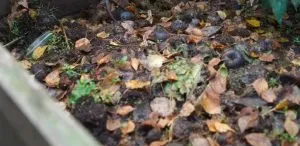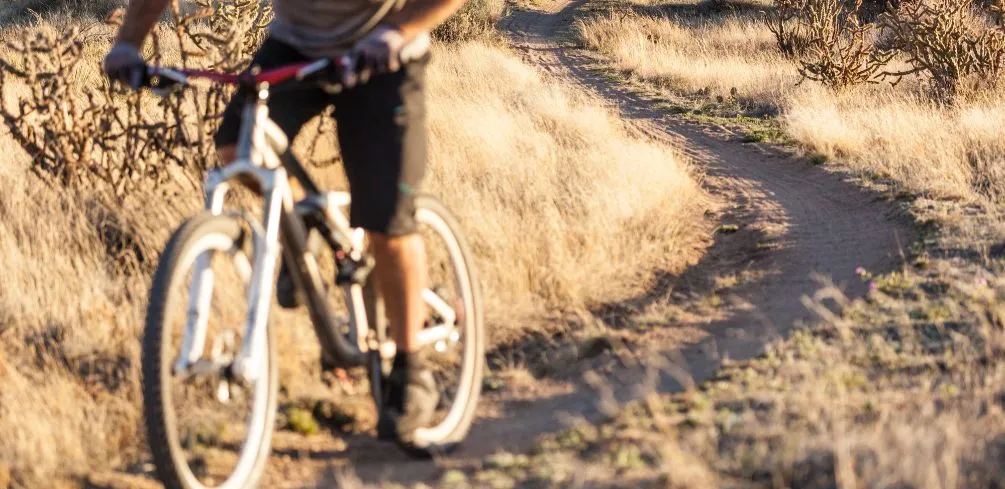Maintaining healthy and youthful-looking skin is a fundamental aspect of personal hygiene and self-care. Aesthetic appeal aside, the skin serves as the primary barrier between the body and the outside world, protecting against harmful pathogens and environmental factors.
However, with daily exposure to dirt, dust, and pollutants, one may wonder how these external agents affect the skin’s health when rubbed onto it. Rubbing dirt on the skin has been a common practice in many cultures since ancient times for various reasons.
While some believe that it removes impurities and dead skin cells, others use it to prevent or treat infections. The impact of dirt on the skin’s health is an issue that has piqued scientists’ interest in recent years.
This article explores whether rubbing dirt onto the skin is safe or detrimental to its overall health and appearance.
What Is Dirt?
Did you know that the average person’s skin is home to over one million bacteria?
With this in mind, it is no surprise that many people turn to natural remedies such as dirt cleansing to maintain healthy skin.
Dirt, a combination of soil, dust and other organic matter, has been used for centuries as a means to remove impurities from the skin.
Dirt contains minerals and nutrients that can be beneficial for the skin.
For instance, clay dirt is known for its ability to absorb excess oil and toxins from the skin.
It also contains minerals such as magnesium, calcium, and potassium which can help nourish the skin.
However, it is important to note that not all types of dirt are suitable for use on the skin.
Some may contain harmful bacteria or chemicals that could cause irritation or infection.
As with any natural remedy, it is essential to do proper research before using dirt as a cleansing agent.
The Health Benefits Of Rubbing Dirt On Skin
In understanding the concept of dirt, it is essential to define it as an accumulation of foreign substances on a surface. This can be organic or inorganic material that may have come from various sources such as the environment or human activities.
Dirt can accumulate on the skin through contact with different surfaces, and this may lead to the clogging of pores, which could result in skin problems.
However, rubbing dirt on the skin has been found to have exfoliating benefits that aid in removing dead skin cells and cleansing the skin. This process helps to unclog pores and prevent acne breakouts.
Additionally, some types of dirt contain minerals that are beneficial for the skin, such as sulfur and magnesium. Rubbing these types of dirt on the skin can help improve blood circulation and promote healthy skin.
- Rubbing damp sand on your feet at the beach can help remove calluses
- Applying a clay mask made from natural earth can help detoxify oily skin
- Using a pumice stone to scrub rough patches on elbows and knees can smoothen out those areas
- Scrubbing with a loofah made from natural fibers can help remove dead skin cells
As seen above, there are several health benefits to rubbing dirt on your skin. It is important to note that not all types of dirt are suitable for use on the body as they may contain harmful bacteria or chemicals. Therefore, it is crucial to research thoroughly before using any type of dirt for skincare purposes.
Incorporating this practice into your skincare routine could potentially lead to improved overall health and well-being.
Potential Risks Of Rubbing Dirt On Skin
Despite the perceived benefits of rubbing dirt on the skin, there are potential risks associated with this practice. One of the primary concerns is the growth of harmful bacteria on the skin.
Dirt contains a range of microorganisms, including bacteria and fungi, which can thrive in warm, moist environments such as those found on human skin. When these microorganisms multiply rapidly, they can cause infections and other health problems.
In addition to bacterial growth, rubbing dirt on the skin may also cause irritation. The abrasive nature of dirt particles can lead to redness, itching, and inflammation of the skin. This is particularly true for individuals with sensitive or dry skin.
Furthermore, certain types of soil may contain chemicals or toxins that can be harmful when absorbed through the skin. While some people believe that using dirt as a natural remedy for various skin conditions is beneficial, it is important to recognize the potential risks involved and take appropriate precautions to protect one’s health.
| Potential Risks | Description |
|---|---|
| Bacteria Growth | Dirt contains microorganisms that can multiply rapidly and cause infections |
| Skin Irritation | Rubbing dirt on the skin can lead to redness, itching, and inflammation |
In light of these risks associated with rubbing dirt on the skin, it is advisable to exercise caution when considering this practice. While some proponents argue that exposing oneself to soil-based organisms may help build immunity over time, it is important not to overlook potential negative consequences such as bacterial infections and skin irritation.
Individuals who wish to experiment with using soil as a natural remedy should take steps such as washing their hands thoroughly before and after handling dirt and avoiding contact with contaminated soil or areas where animals have defecated. By taking these precautions, individuals can minimize their risk while still exploring alternative options for maintaining healthy skin.
Tips For Safely Rubbing Dirt On Skin
When it comes to rubbing dirt on your skin, it is important to select the right type of dirt. Not all dirt is created equal, and some may contain harmful bacteria or toxins that can cause skin irritation or infection.
It is recommended to choose dirt from a clean source, such as a garden or forest, and avoid using dirt from areas with heavy pollution or industrial waste.
Before rubbing dirt on your skin, it is also important to follow proper cleansing rituals. This can include washing your hands and face thoroughly with soap and water, as well as exfoliating any dead skin cells to ensure maximum absorption of the dirt’s nutrients.
Additionally, it is recommended to use a gentle moisturizer after rubbing the dirt on your skin to prevent dryness and maintain healthy skin.
Incorporating these tips for safely rubbing dirt on your skin can provide numerous benefits for your overall health and wellness. From improving circulation and detoxifying the body to promoting clearer and brighter skin, rubbing dirt on your skin can be a simple yet effective addition to your self-care routine.
So next time you’re looking for a natural way to enhance your beauty regimen, consider giving this age-old practice a try.
The Bottom Line On Rubbing Dirt On Skin
After learning about the various tips for safely rubbing dirt on the skin, it’s important to understand the benefits of using natural cleansers as an alternative to traditional skincare products.
Dirt can act as a gentle exfoliant, removing dead skin cells and revealing smoother, brighter skin underneath. Additionally, certain types of mud and clay contain minerals that can nourish and balance the skin, helping to improve its overall health and appearance.
When incorporating dirt into your skincare routine, it’s crucial to choose the right type of dirt or mud for your skin type and concerns. For example, kaolin clay is ideal for oily or acne-prone skin due to its ability to absorb excess oil and unclog pores. On the other hand, bentonite clay is better suited for dry or sensitive skin as it gently cleanses without stripping away essential oils.
By experimenting with different exfoliating methods and natural cleansers, you can find a unique routine that works best for you and helps you achieve your desired results.
In conclusion, incorporating natural cleansers like dirt into your skincare routine can offer numerous benefits while minimizing potential side effects from harsh chemicals found in traditional products. By researching different types of mud and clays and experimenting with exfoliating methods, you can develop a personalized routine that effectively cleanses your skin while leaving it feeling nourished and refreshed.
Frequently Asked Questions
What Types Of Dirt Are Safe To Rub On Skin?
The detoxifying effects and skin exfoliation benefits of dirt have been studied for centuries.
While most types of dirt contain microorganisms that can be harmful to the skin, certain types such as bentonite clay and kaolin clay, have been found to be safe for topical use.
These clays are known for their ability to absorb toxins from the skin, unclog pores, and promote a healthy glow.
However, it is important to note that not all dirt is safe for skin use, and caution should always be exercised when considering unconventional beauty treatments.
As with any skincare product, it is recommended to do a patch test before applying dirt on larger areas of the skin.
Can Rubbing Dirt On Skin Help With Acne?
Acne is a common skin condition that causes pimples, blackheads, and whiteheads.
There are numerous treatments available for acne, including over-the-counter products and prescription medications.
Some people believe that exfoliating dirt can help with acne by removing dead skin cells and unclogging pores.
While there is limited scientific evidence to support this claim, exfoliation may help improve the appearance of acne-prone skin.
However, it is important to note that not all types of dirt are safe to use on the skin.
It is recommended to wear dust masks while using any type of exfoliating dirt to avoid inhaling harmful particles.
Overall, further research is needed to determine the effectiveness and safety of using exfoliating dirt as a treatment for acne.
Is It Safe To Rub Dirt On Open Wounds Or Cuts?
The use of natural remedies has been gaining popularity in recent years, including the use of germ-free dirt for wound healing. However, the safety and efficacy of this practice is still a matter of debate among medical professionals.
While some studies have shown promising results in reducing inflammation and promoting tissue regeneration, there are also concerns about the risk of infection and potential complications.
It is important to note that not all types of dirt are created equal, and only specifically prepared germ-free dirt should be used for this purpose.
In conclusion, while natural remedies such as germ-free dirt may offer potential benefits for wound healing, it is crucial to consult with a healthcare professional before attempting any unconventional treatments.
How Often Should You Rub Dirt On Your Skin?
Exfoliating dirt has become a popular trend in recent years, with many people advocating for the benefits of dust baths and rubbing dirt on their skin.
However, it is important to note that there is no scientific evidence supporting these claims. In fact, rubbing dirt on your skin can actually be harmful, especially if you have any open wounds or cuts.
It is recommended to stick to traditional exfoliating methods, such as using a scrub or loofah. While it may seem tempting to try out the latest skincare trends, it is always best to prioritize safety and consult with a dermatologist before trying any new beauty routines.
Can Rubbing Dirt On Skin Cause Allergic Reactions?
Rubbing dirt on the skin has been a traditional beauty practice for centuries, but it can also have detrimental effects.
In fact, according to a study conducted by the American Academy of Dermatology, rubbing dirt on the skin can cause allergic reactions in some individuals.
Although dirt is known for its cleansing benefits, it may also lead to skin irritation and inflammation.
As such, it is important to be mindful of the potential risks associated with this practice and to seek alternative methods that do not cause harm to the skin.
While dirt may have cultural significance, it is important to prioritize one’s personal health and well-being above any perceived beauty benefits.
Conclusion
Dirt has been used for centuries by traditional healers as a remedy for various skin conditions.
However, not all types of dirt are safe to use on the skin. Safe types of dirt to rub on the skin include clay, mud, and loess. These types of dirt contain minerals that can help improve skin health and reduce inflammation.
While some people believe that rubbing dirt on the skin can help with acne, there is no scientific evidence to support this claim. In fact, rubbing dirt on open wounds or cuts can increase the risk of infection and delay healing. It is important to consult a medical professional before using any home remedies for skin conditions.
The frequency at which you should rub dirt on your skin depends on your specific condition and the type of dirt being used. It is recommended to start with small amounts and gradually increase as needed.
Finally, it is possible for rubbing dirt on the skin to cause allergic reactions in some individuals. Therefore, it is essential to conduct a patch test before using any new product or remedy.
In conclusion, while certain types of dirt may have benefits when used properly, it is important to do so cautiously and under medical supervision if necessary. While it may be tempting to try out home remedies for various skin conditions, consulting a medical professional should always be a priority in order to ensure safety and efficacy.











